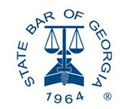Field Sobriety Tests
You have thirty (30) calendar days from your arrest to request an administrative hearing.
You have thirty (30) calendar days from your arrest to request an administrative hearing.



















When you are stopped by a law enforcement officer for suspicion of driving under the influence of alcohol in Atlanta, the officer will most likely ask you to submit to a series of field sobriety tests. The officer is most likely going to use three standardized field sobriety tests that he or she learn from the National Highway Traffic Safety Administration (NHTSA). They are the horizonal gaze nystagmus (HGN); walk and turn test; and the one leg stand test.
The Horizontal Gaze Nystagmus (HGN) test is one of three standardized field sobriety tests that officers give before making a DUI arrest. It is usually the first test given and many people believe they pass the test because they followed the officer’s instructions. This is incorrect. Following the officer’s instructions simply allows the officer to observe your eyes. Although the HGN test seems simple, there are actually many problems with the test that can lead to the false conclusion that a driver was intoxicated. The officer is looking for a maximum of six clues (three in each eye).
The officer begins by asking you to stand with your feet together and hands at your sides. He will then tell you to follow his finger with your eyes while he moves it across your face. Officers often use a small pen with a light at the tip, instead of their finger. As the light moves across your face, slightly above eye level, the officer is watching to see if your eyes are able to track the pen smoothly or do they display an uneven jittery motion – called nystagmus.
During the first phase, the officer looks for nystagmus as the eyes move from side to side. This clue is called lack of smooth pursuit. In the second phase, the officer looks to see if the nystagmus is present and continuous for a minimum of four seconds while you look to the extreme left or right. This is called distinct nystagmus at maximum deviation.
In the third phase, the officer looks to see how quickly the nystagmus begins. If he sees your eyes bouncing before his finger moves from your nose to the outer edge of your shoulder, he will count this as a clue. This is called nystagmus onset prior to 45 degrees.
Although this test seems scientific, there are many reasons why the HGN test is not a reliable indicator of intoxication. Nystagmus can be caused by many things other than intoxication. Some medical conditions cause nystagmus. Eye fatigue can cause nystagmus. In fact, taking the HGN test when there is a rapidly changing background in your field of view can also cause lead to a false positive for nystagmus. That means that if you can see flashing police lights or rapidly moving traffic when taking the test, it could have an impact on the result.
The officer may also make an error giving the test. He might fail to make the required number of passes for each eye. Or, he can wrongly estimate the 45% angle that is required for the third phase of the test. He or she might even think he sees nystagmus, when it really isn’t there. Officers are warned that can happen in their training materials.
What is worse, in almost every case, the video will not show your eyes as you are taking the test. That means your DUI lawyer in Atlanta can only check to see if the officer gave the test correctly. We have no way to verify what the officer saw. At times the HGN test results will even contradict the results from the other standardized field sobriety tests. In fact, I have seen cases where people pass the two balance tests, but fail the HGN test and are arrested for DWI. This really shouldn’t happen. The HGN test does not demonstrate the reliability that should be required of a test used to convict someone with a crime.
This is one of the DUI balance tests used in the standardized field sobriety tests. It has two stages: the instruction stage and the walking stage. During both stages, the officer is looking for specific “clues” of intoxication. There are a maximum of eight clues. If the officer believes he sees two or more clues, at any time during the test, you will fail the test and be arrested for DUI.
The officer will instruct you to:
He will then give you following instructions for the test, demonstrating parts of the test while he talks:
Problem: You Don’t Know You Are Already Being Graded
What most people do not know is that, even though this is the instruction stage, you are already being graded. The test has already begun and the officer is already looking for two specific mistakes:
Either of these mistakes would be considered a clue. If you do them both, just once, you have failed the test even if you do everything else perfectly. To make things worse, you have been told to keep your arms at your side – which makes balancing even more difficult.
During the walking stage, the officer is looking for 6 clues:
If you do any of these things, even one time, it will be considered a clue. So suppose you missed your heel to toe one time and you raised your arms one time for balance for a split second, you have just failed the test.
This is the second DUI balance test. The officer is looking for two or more clues on this one as well. They are a maximum of four clues. The four clues are swaying, hoping, putting foot down and raising your arms for balance.
The officer will have you stand with both of your feet together. He will instruct you to raise either your left or right foot off the ground with your arms to your side. You will then be instructed to count by 1000s. The officer will stop you after 30 seconds has passed.
The officer will sometimes use in addition to the three NHTSA tests other field sobriety tests. They are the modified Rohmberg balance tests; lack of convergence and reciting your ABCs, usually from c to x.

Former Cobb Assistant District Attorney | Former Cobb Assistant Solicitor General | Former Baldwin Co. Sheriff’s Deputy | Former DeKalb County Police Officer | Former Milledgeville Police Officer | Former U.S. Army M.P.






